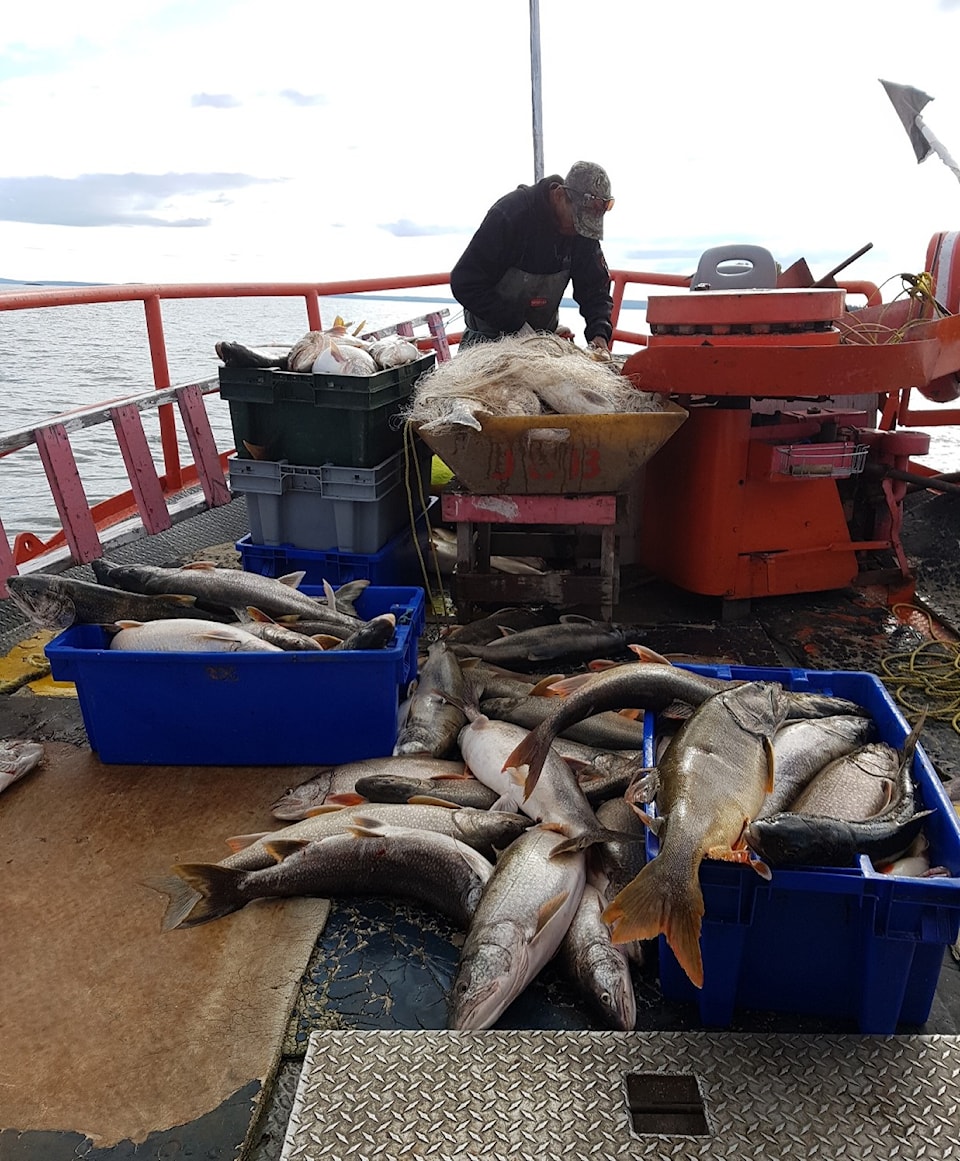Initial payments to NWT fishers topped $1 million in 2023, which was a whopping 132 per cent increase compared to 2022.
That marked a stark reversal from a five-year decline.
The summer and winter catch from Great Slave Lake totalled 336,000 kg
The number of commercial fishers also jumped in 2023, reaching 56, the highest number since 2006, according to the GNWT Economic Review 2024-25.
"This increase was partly due to the lack of disrupted trade from previous years and from higher fish prices which led to increased participation and production," the document stated.
The GNWT has $450,000 budgeted in support of commercial fisheries in 2024-25, on par with the amount last year.
Freshwater Fish Marketing Corp
The Freshwater Fish Marketing Corporation's return to NWT and Alberta fishers in 2023 was $30.7 million, or 48 per cent, leaving the corporation with retained earnings of $15.9 million, which was lower than its $17.3 million performance target.
The payment to fishers in 2022 was $24.1 million, 27.4 per cent less than last year.
The price paid per round kilogram combined for walleye, whitefish and Northern pike was $2.95 in 2023, a 19 per cent climb from $2.48 in 2022.
Overall the corporation's sales rang in at $73.2 million, up 4.4 per cent from $70.1 million. However, fish deliveries were 900,000 kilograms lower than planned.
The Winnipeg-based Freshwater Fish Marketing Corporation purchases and markets all commercial fish legally caught in the Northwest Territories and Alberta.
GNWT industry support
In 2023, the Department of Industry, Tourism and Investment provided $661,317 in financial assistance to the commercial fishing industry through various grants and contributions.
The largest sum was $169,252 to assist with summer freight. That was followed by $150,515 for the Tu'Cho Fishers Cooperative in the South Slave to aid in freight and administration costs.
Another $150,000 was designated for the Tu'Cho Fishers Cooperative to hire a Hay River-based manager. The Tu'Cho Fishers also received $100,000 for organizational development and readiness and $55,000 to subsidize freight.
Fifty fishing vessels were registered to operate on Great Slave Lake in 2023, according to the Department of Fisheries and Oceans.
The NWT Metis Nation benefitted from $22,900 to assist with its winter fishery training project.
Fishing, combined with hunting, forestry and agriculture under Statistics Canada data, accounted for 0.6 per cent of the NWT's gross domestic product in 2023 -- barely changed from 0.52 per cent five years ago.
Fish plant stumbles
The Hay River fish plant, a GNWT project, is slated to open later this year but it will be approximately $6.5 million over its estimated cost of $15 million and will be more than two years behind schedule.
The primary factors in the budget overages are the higher costs of building materials and plant equipment as well as construction delays due to staff shortages, pandemic-caused supply chain issues and the flooding and wildfires that have affected Hay River over the past couple of years, according to the Department of Industry, Tourism and Investment.
The plant, designed to process the entire catch from the Great Slave Lake fishery, will required two full-time and two part-time employees year-round.
Something else that won't be consistent with the way the GNWT envisioned the fish plant is who is running the facility. At the time, it was heralded as a business that would be locally managed.
The Tu'Cho Fishers and the GNWT signed a cooperation agreement in July 2022 to work toward the revitalization of the Great Slave Fishery.
"I look forward to working with NWT fishers through their Tu'Cho Cooperative, to ensure that NWT producers see the benefits of having a direct say in their industry," then-ITI Minister Katrina Nokleby stated at the time.
However, in April 2023, the GNWT and the Freshwater Fish Marketing Corporation signed a three-year deal for the federal Crown corporation to operate the 1,600-square-foot fish plant to allow for a period of "transitional training and capacity building."
The corporation also noted that it was working with the federal government and consulting with Indigenous groups to sell its fish processing facility and land in Hay River.
“The GNWT needed an experienced entity to support the initial operationalization of the new [Hay River fish plant], including market development,” ITI stated in mid-May. “FFMC brings significant management and marketing knowledge to this project. FFMC’s objective is to build capacity in the NWT that will enable the Hay River facility to run as a separate independent, locally owned business by spring 2026."
ITI also acknowledged that the Tu'Cho Co-op is “not actively engaged in plant operations.”
A spokesperson for the Tu'Cho Co-op said the organization will seek Indigenous partners, federal support and private investors to build an independent fish processing plant.
